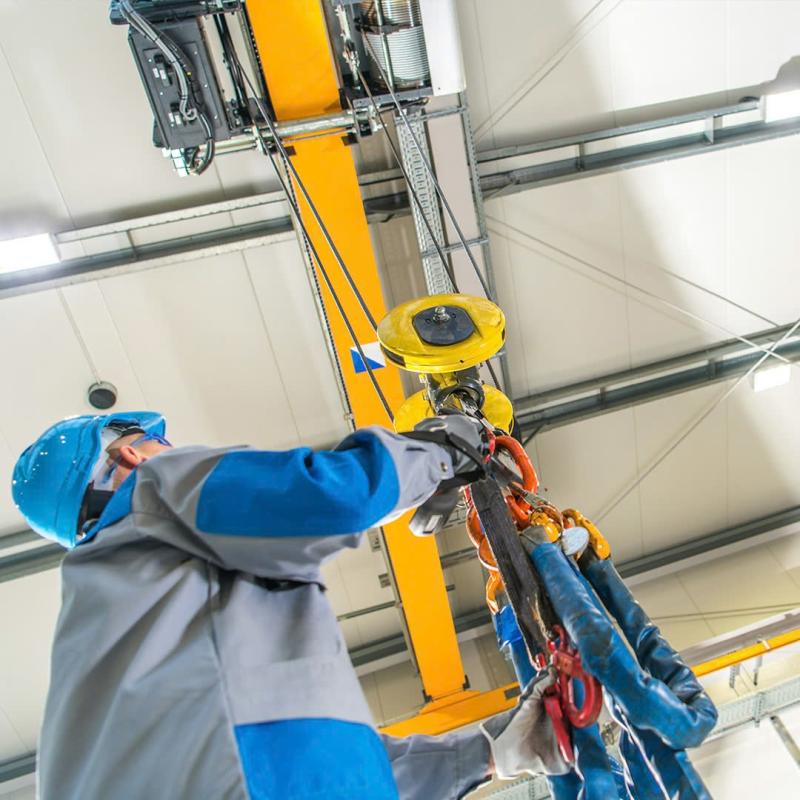



One such solution is the jib crane—a versatile lifting system engineered to handle repetitive, localized loads with efficiency and precision. Whether mounted on a floor, wall, ceiling, or pillar, jib cranes provide ergonomic and operational advantages in manufacturing, warehousing, and assembly environments.
To explore a full range of high-performance solutions, browse the complete selection of Jib Crane roles.
Repetitive lifting operations are a staple of many industries, from small-scale fabrication shops to large distribution centers. These tasks, if performed manually, can lead to fatigue, injuries, and inefficiency. Jib cranes serve as an effective countermeasure by automating or assisting in these lift cycles.
Unlike large overhead cranes that cover broad facility spaces, jib cranes are purpose-built for workstations and focused lifting zones. They excel in repeatable tasks such as transferring parts from conveyors to workbenches, placing molds into machines, or moving heavy tools around tight work cells.
Learn more about The importance of a Jib Crane.
Jib cranes operate with precision and speed, making them perfect for workflows that demand frequent lifting. Their intuitive hoist controls allow operators to move items quickly and accurately.
By handling the lifting load, jib cranes help prevent musculoskeletal disorders and reduce worker fatigue, ensuring consistent output across shifts.
In repetitive operations, predictability matters. Jib cranes follow defined paths and lifting arcs, which helps reduce placement errors and ensures smooth transitions.
Their compact design allows wall mounted, ceiling mounted, and articulating jib cranes to function in narrow work cells or crowded production floors.
For deeper insight into lifting configurations, see: Difference between crane and jib cranes
These are bolted directly into the floor and can rotate 360 degrees, providing broad coverage for centrally located lifting zones.
Installed on structural walls, wall mounted jib crane products are excellent for repetitive tasks at fixed stations like packaging, sorting, or inspection.
For facilities with ceiling load capacity, these cranes offer lifting without taking up floor or wall space, making them ideal for overhead lifting in tight quarters.
Articulating jib cranes products feature dual-arm pivots, enabling complex movements around obstructions—ideal for repetitive assembly or machine loading tasks.
Mounted on vertical steel columns, pillar jib cranes are ideal for long-term, repetitive lifting in fixed-radius zones such as machining cells or fabrication lines.
Jib cranes can be placed at every station of a production line, helping operators lift and transfer components efficiently, without stopping the line.
Operators use jib cranes to repetitively lift heavy raw materials or finished parts to and from CNC machinery, improving turnaround times and reducing downtime.
In manufacturing settings involving dies, molds, or specialized tooling, jib cranes facilitate safe and fast transfers between storage and active use.
Jib cranes enhance end-of-line processes by aiding in the repetitive lifting of boxes or parts onto pallets or conveyors.
Proper installation ensures optimal performance and safety. Follow this step-by-step guide on How to master a jib crane to get started.
Load requirements
Rotation needs (180° vs 360°)
Mounting style compatibility (floor, wall, ceiling)
Space constraints and accessibility
| Benefit | Description |
|---|---|
| Faster task execution | Speeds up repetitive movements across short distances |
| Improved ergonomics | Reduces physical strain for operators |
| Space efficiency | Compact designs work in tight layouts |
| Safety enhancement | Minimizes injury risks from heavy or awkward lifting |
| Productivity gains | Enables continuous workflow at each station |
Whether used in a single workstation or across a full production line, jib cranes provide the repeatability, speed, and safety that modern operations demand. For industries that rely heavily on short-cycle lifting tasks, choosing the right crane type can dramatically enhance productivity.
To explore crane solutions for repetitive tasks in your facility, start with the full line of Jib Crane roles.
References
1. How to operate a Jib Cranes safely
3. Over brace jib crane wall mounted
5. Is a Jib Crane a Gantry Crane
6. Articulated Jib Crane Wall Mounted
8. Manual Counterbalance Crane
10. Over Braced Jib Crane Column Mounted
Sign up to receive the latest info on new Aardwolf products, special offers and more.
By signing up you agree to receive emails from Aardwolf with news, special offers, promotions and other information. You can unsubscribe at any time.